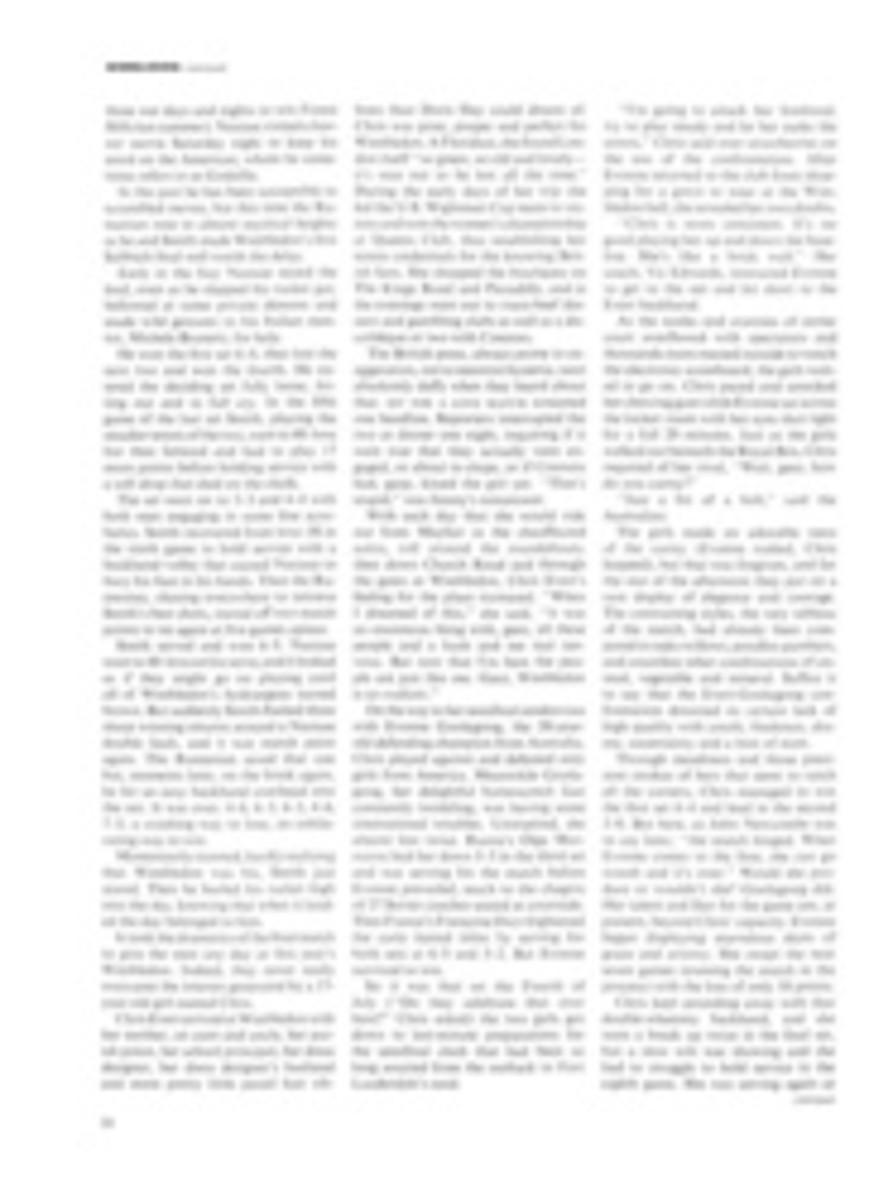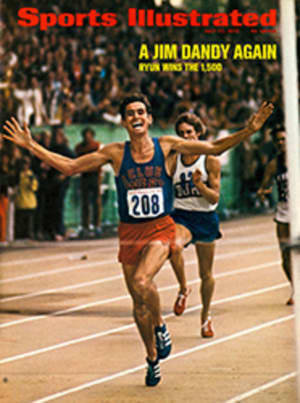
Basketball, Betting and Borscht
Like most young men outside New York City in the 1940s, I always considered basketball strictly a winter sport. But in the spring of my freshman year at Syracuse my brother-in-law told me about the competition that operated throughout the so-called Borscht Belt of resort hotels in upstate New York. He suggested that I think about taking a summer job in one of the hotels and play on its team. A native New Yorker, he had played for George Washington University and had spent a couple of summers in the Catskills himself. It was fun, he assured me, and profitable as well. An enterprising waiter-basketball player could make himself $1,500—not bad in those days for three months' work and play.
If you were an established Eastern college star or a promising freshman, you were usually approached by one of the hotels during the spring and invited to come to work that summer. The arrangement was that in addition to kitchen and dining-room chores you played on the hotel team two nights a week. Most of the hotels had their own mini-stadiums, some seating as many as 1,500 people. The game had grown popular in the Catskill resorts during the 1930s and early 1940s chiefly as a recreation for younger guests and as something for the hotel staff to do during off hours.
As play got more competitive, informal leagues were formed, and instead of relying on whatever talent showed up at the beginning of summer, hotels began recruiting players. The big contests—say, between Grossinger's and Kutsher's—were like college all-star games. Coaches were enthusiastic about the arrangement. After all, it kept their best players in good shape, maintained their competitive edge, provided them some spending money and generally kept them out of trouble. Or so it seemed.
My brother-in-law, who knew a hotel owner, helped arrange the interview that led to my job as a busboy in a medium-sized retreat in Loch Sheldrake in Sullivan County, the heartland of the resort area. The work proved more demanding than I expected: in addition to carrying dishes back and forth between the kitchen and dining room three times a day, playing basketball two nights a week and "being available" for the vacationing secretaries, we were frequently put to work on such extracurricular tasks as folding and stacking chairs for guests attending the nightly show-time programs.
Practically all the basketball players recruited for the Borscht Circuit in the early days were graduates of New York City school yards—Dutch Garfinkel and Max Zaslofsky of St. John's, Ralph Kaplowitz and Sid Tannenbaum of NYU, Irv Torgoff and Irv Rothenberg of Long Island University, and Red Holzman and Sonny Hertzberg of City College, to name several.
After World War II some of the larger hotels began to lure players from other parts of the country. George Mikan of De Paul worked and played at Klein's Hillside in Parksville. Cliff Hagen and Frank Ramsey of Kentucky bused dishes at Kutsher's in Monticello, probably the most sports-minded of the Catskill hotels, where Duquesne's Chuck Cooper and Sihugo Green also played.
Bob Cousy, then at Holy Cross, sharpened his behind-the-back dribble and other manifold skills while a summer waiter at Tamarack Lodge in Greenfield Park. One of his teammates was Jack McMahon of St. John's. Easy Ed McAuley came all the way from Missouri to work and play for the old (and since destroyed) Ambassador. Cousy's playing coach at Tamarack for a time was Allie Sherman.
While teams from Grossinger's and Tamarack fielded crack varsity talent, many smaller resorts made do with capable but undistinguished collegians, many of them from freshman and junior varsity squads. My hotel had such a team. Our best player had been a hotshot freshman at NYU for whom big things were predicted. Although he certainly impressed me, he somehow never quite lived up to his promise as a varsity player. The rest of our aggregation consisted of a freshman from City College, a junior varsity player from LIU, a CCNY dropout, a Wagner College varsity guard and a 6'4" freshman from Stanford, our "big man." And, of course, me.
I learned more about the game that first summer in the Catskills than in all my previous years of playing. For the first time, I was up against athletes from the tough, inventive playgrounds of New York City, playing a style that probably reached its height with the Knicks' championship team of two years ago. It was a rare opportunity for a player coming from less sophisticated parts. But then something strange began to happen. While most of the college players were busy working on their shooting and passing talents, some others were becoming proficient in the sinister art of missing.
It takes a certain perverse skill to miss convincingly on purpose. It also takes practice, and so it was that some of my colleagues began to spend their summer afternoons on a deserted court, where they worked not on their shooting but on their missing. Oblivious to the implications, I used to marvel at how they could dribble up to the basket and, with either hand, lay the ball up against the backboard and apparently into—and then out of—the basket. The maneuver required lots of English, so that the ball, after hitting the backboard, spun around the rim furiously before popping out. One of the players even developed the knack of making the ball rattle back and forth inside the rim before, almost as if by remote control, it suddenly catapulted upward, just clearing the front rim and dropping out. They would laugh at their successes, and we would laugh with them. Recalling it later, it didn't seem so funny.
Two factors contributed to the unsavory climate that began to surround basketball in the Borscht Belt in the late '40s. First was the ubiquitous presence of gamblers at most of the hotels. The second was the cynical attitude of many players who spent their summers there—a cynicism born of the master-servant relationship between the player and the hotel. The schedules made the games seem drudgery to most players, who objected to having to perform after working three meals in the dining room. Indeed, for a 9:30 home game you usually went directly from the dining room to the basketball court, stopping only at the staff dormitory to change into your uniform.
As for gamblers, they operated quietly but effectively. They might begin to ingratiate themselves with a player-waiter by leaving big tips, or with flattery and offers to help the boy when he got back to New York. All it would take was a phone call to open the gates of paradise: nightclubs, clothes, free dinners with the girl friend. Most players never called, but the gamblers often did. Thus the relationship was renewed and the stage set for the scandals that followed. The easy morality of the Catskill competitions also helped.
Most of the hotels had betting pools on the games. Hungry for action of any kind (the harness track at Monticello didn't come until years later), most of the guests joined in enthusiastically. The money wasn't much by gamblers' standards—a dollar or so for a "chance" based on the aggregate score of that evening's game. The chance was a stamped slip of paper, drawn at random and containing a number, usually from 75 to 250. The slip that agreed with the total score would win the pool. If the lucky number had not been sold, guests were informed, everyone got his money back. Unfortunately, it didn't always work out that way.
For example, at one hotel the most valuable person on the bench was not a player or coach but the guy who kept score. In the last period of play, it was his responsibility to keep close tabs, on a clipboard list, of the unsold numbers in that night's pool. Late in the final quarter, a time-out would be called, and the nonplaying accountant would inform the players of all unsold numbers that were within reach. Thus, if the score were 82-64—it didn't matter in whose favor—and number 146 was clear, the home team would try to freeze the ball. (If there were still a couple of minutes remaining to be played, it was prudent to aim for the next highest unsold number to avert suspicion.)
In one game we were leading by about 20 points, with roughly a minute to play, when our score-watcher called time-out and informed LIS that the current aggregate score was unsold. We began our freeze, but soon there were cries of "Shoot! Shoot!" from guests who obviously held slightly higher numbers. Most of the other fans merely looked puzzled. Our opponents were well aware of our strategy and tried to disrupt it, but on that night we held on and the game ended on the "open" score. The pool money ended up in the players' hands through the invention of a fictitious guest who was announced as the winner. The hotels themselves had no part in our machinations or, of course, in the more serious activities disclosed in the investigation of the fix scandals of the '50s. At worst, the hotels were guilty of blatant naiveté in not doing a better job of policing the betting pools and the games themselves.
At the time, none among us seemed to have any qualms about our tawdry manipulations. The prevailing attitude was summed up with a shrug. After all, we didn't throw the game. We always played to win, and what the hell? Nobody was going to get hurt at a dollar a chance, and besides the odds were more than 175 to 1 against a bettor's winning anyhow. The final justification was that we only pulled this off every couple of weeks, so that most of our games were perfectly straight.
Of course, when the college point-shaving and dumping scandal was revealed in 1951, we were considerably sobered. We realized that perhaps this was how the mess had started in the first place. "A man is not honest simply because he never had a chance to steal," goes a Yiddish folk saying.
When some of the indicted players told investigators that they had first met fixers in the mountains, it was the beginning of the end of Borscht Belt basketball. Shortly thereafter, the Eastern Collegiate Athletic Conference ruled that any player from a member school who played basketball in the Catskills would lose his eligibility.
After a time, the games were revived at several hotels—notably Kutsher's, which still has an active team—and summer basketball has enjoyed a bit of revival among collegians. But those days of rampant competition seem gone forever. The scandals and the ECAC ruling cut off the wellspring of Catskill talent. Some hotels tried to keep the game alive by bringing in players from outside the East, but it was hopeless, and from then on the busboys and waiters who spent their summers in the Borscht Belt had more time for the vacationing secretaries.
PHOTO
BOB COUSY IN HIS BORSCHT DAYS

